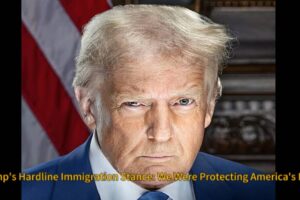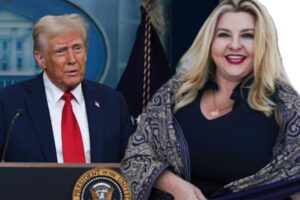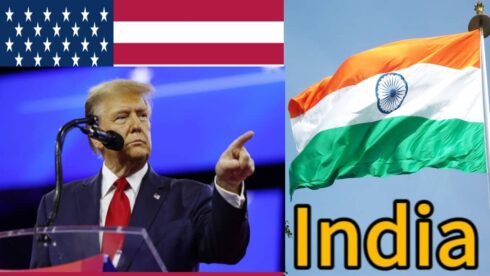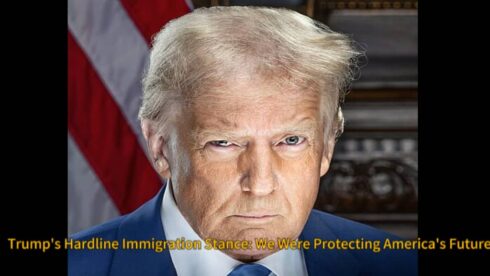President Donald Trump has reignited a long-standing trade dispute with India, declaring that the United States will impose reciprocal tariffs equal to those levied by India. During a recent speech, Donald Trump accused India of maintaining some of the highest trade barriers in the world, calling its tariff policies “unfair and unacceptable.” He emphasized that his administration, if re-elected, would implement a strict “mirror tariff” policy to ensure that American goods are not disadvantaged in the Indian market.
India, a major player in global trade, has historically imposed high tariffs on various imported goods, including automobiles, agricultural products, and technology equipment. Under Donald Trump’s proposed approach, any tariff imposed by India on American exports will be met with an identical tariff on Indian imports. This move signals a significant shift in US-India trade relations, potentially triggering a tit-for-tat economic confrontation that could impact bilateral trade worth over $191 billion annually.
Economic Ramifications: Potential Trade Disruptions
Donald Trump’s aggressive stance on tariffs could have far-reaching economic consequences for both countries. India, as the world’s fifth-largest economy, is a crucial export destination for American businesses, particularly in sectors like defense, agriculture, and technology. A tariff war could disrupt supply chains, raise consumer prices, and deter investment from multinational corporations.
For India, increased tariffs on its exports to the US could damage key industries, particularly in textiles, pharmaceuticals, and information technology services. Indian businesses reliant on the American market may face declining profits and reduced competitiveness. In response, New Delhi may seek alternative trade alliances or negotiate new trade agreements with Europe and China to counterbalance the impact of US-imposed tariffs.
F-35 Fighter Jets for India: Strengthening Military Ties
In a surprising strategic shift, Donald Trump also announced that the US will expand military sales to India, offering the highly advanced F-35 stealth fighter jets. This move signals an effort to bolster India’s defense capabilities, particularly amid ongoing tensions with China and Pakistan. The F-35, considered one of the most sophisticated fighter jets in the world, would provide India with next-generation stealth capabilities, advanced radar systems, and superior combat effectiveness.
The decision to offer the F-35 marks a significant departure from previous US policies, which have traditionally limited India’s access to such high-end military technology. While India has already been strengthening its defense ties with the US through deals like the S-400 waiver and MQ-9B drone purchases, acquiring F-35s would elevate its air force to a new strategic level, potentially altering the balance of power in South Asia.
Geopolitical Repercussions: China and Pakistan on Alert
Donald Trump’s military sales proposal has raised alarm bells in Beijing and Islamabad. China, which has ongoing border disputes with India, views US-India defense cooperation as a direct challenge to its regional influence. The introduction of F-35s into the Indian Air Force would significantly enhance India’s aerial superiority, countering China’s J-20 stealth fighters and increasing deterrence along the Himalayan frontier.
Pakistan, a long-time adversary of India, has also expressed concerns over the potential acquisition of F-35s. With an already fragile military balance in the region, Islamabad fears that advanced American weaponry could tilt the scales in India’s favor, prompting a potential arms race. This move could also complicate US-Pakistan relations, as Islamabad has traditionally relied on Washington for military aid and strategic cooperation.
Political Implications: Trump’s Election Strategy
Donald Trump’s strong stance on tariffs and military sales appears to be a calculated move to appeal to his voter base ahead of the 2024 presidential election. By portraying himself as a defender of American economic interests, he seeks to rally support from domestic manufacturers and businesses that have long criticized India’s high tariff rates. His promise of “fair trade” resonates with blue-collar workers and industrialists who feel disadvantaged by international trade policies.
On the foreign policy front, strengthening US-India military ties aligns with Donald Trump’s broader strategy of countering China’s rise. By positioning India as a key ally in the Indo-Pacific region, Donald Trump aims to reinforce the Quad alliance (which includes Japan and Australia) as a counterweight to Beijing’s growing military assertiveness. However, this approach could strain US-China relations further, increasing tensions in an already volatile global landscape.
India’s Response: Diplomatic Maneuvering or Retaliation?
New Delhi has yet to issue an official response to Donald Trump’s statements, but analysts predict that India will carefully weigh its options. Prime Minister Narendra Modi, who has maintained a strategic relationship with both Donald Trump and current President Joe Biden, may seek diplomatic engagement to de-escalate trade tensions while preserving defense cooperation.
However, if Donald Trump follows through on his tariff threats, India could retaliate by imposing countermeasures on American exports, potentially affecting companies like Apple, Boeing, and major agricultural producers. Additionally, India may accelerate trade talks with the European Union and Southeast Asian nations to reduce reliance on the US market. As global trade dynamics shift, the outcome of this escalating dispute remains uncertain, with far-reaching consequences for international economics and security.














